On January 26, Italy’s government — led by then-Prime Minister Giuseppe Conte, who is close to the Five Star Movement — collapsed when its governing coalition became untenable. That tenuous coalition included, most prominently, the left-wing populist Five Star Movement and center-left Democratic Party (PD). It also included a relatively new party, Italia Viva, which former Prime Minister Matteo Renzi established in September 2019 after seceding from the PD. Italia Viva’s parliamentary seats were crucial for the government to have a majority in the Senate. But following disagreements over access to European funding via the European Stability Mechanism, the management of the European Union (EU) Recovery Facility, reopening of schools, and other issues (including the management of the intelligence agencies), Renzi withdrew his support for the Conte-led government. Conte was forced to resign, triggering the current crisis.
For now, former European Central Bank Governor Mario Draghi is conducting negotiations with Italian political parties to form a new government. What comes next for Italy, and what does the sudden shakeup mean for partners like the United States?
HOW DID WE GET TO DRAGHI?
In a parliamentary republic such as Italy, the resignation of the prime minister triggers a decision point for the president of the republic. President Sergio Mattarella could either call for the existing government to face a confidence vote in parliament or conduct consultations with all political parties to explore opportunities to create an alternative governing coalition. He chose the latter, and in this case tasked President of the Chamber Roberto Fico with exploring options. If consultations fail — which they did — the president of the republic can make one of two calls: dissolve parliament and call for new elections, or task an institutional figure (usually one who is outside politics), to form a new government that must face a confidence vote in the existing parliament. For this, Mattarella nominated former European Central Bank (ECB) Governor Mario Draghi.
Mattarella argued that while elections are crucial to democracy, the technical requirements they would entail during a pandemic would be detrimental for public health, as well as Italy’s economy. Elections require at least two months of preparation time, during which the campaign and elections themselves would imply sanitary risks. Moreover, the lack of a fully empowered executive government could delay vaccinations and the elaboration of the economic plan requested by the EU commission before Italy can access funding from the EU Recovery Facility.
WHERE DOES ITALY GO FROM HERE?
As of now, most parties have agreed to support Draghi’s government and are jostling for key positions. Given the technical (and un-elected) nature of this government, this comes at high political cost for some of them. The Five Star Movement, which in its origins stood against technocracy, is highly divided and will likely ask its base — through the online platform Rousseau — whether or not to endorse Draghi. The League has also opened up to Draghi, refusing to join its coalition partner Brothers of Italy as part of the opposition (together, they govern 14 of 20 Italian regions). For now, rumors say that Draghi has delineated a broad program, touching upon tax and justice reform, along with a strong push for school reopening and vaccinations for teachers. Wide support among Italian political parties may actually make the job difficult for Draghi: He will need to attentively select his ministers, negotiate and balance several stances, and ultimately ensure the operability of this new government.
WHAT DOES THIS MEAN OUTSIDE ITALY?
The U.S. and Italy share political, economic, and security ties that exist separately from specific governing circumstances. However, at this particular moment — when there is enthusiasm as Joe Biden enters office in relaunching trans-Atlantic relations and multilateralism — Italy matters because of its chairmanship of the G-20 summit and its co-chairmanship of the COP26 on climate. Moreover, given the importance of its security ties with the U.S. and its position at the center of the Mediterranean, Italy is a crucial partner for the U.S. in the overall discussions over European strategic autonomy. In this regard, a high-profile figure like Mario Draghi — who has top-level experience in European institutions — may take potentially stronger stances in international and European arenas. Under his leadership, Italy may acquire more political leverage in the EU, challenging the Franco-German leadership in Europe and in its relations with the United States.
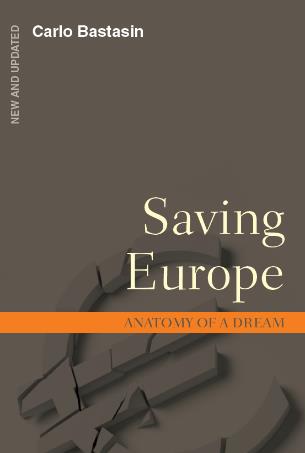
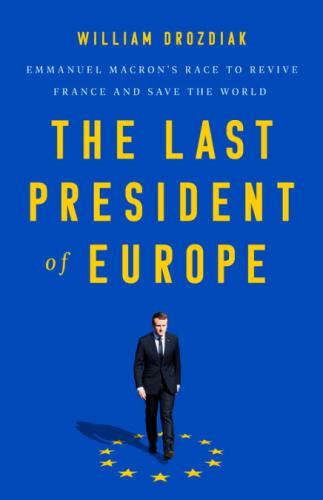
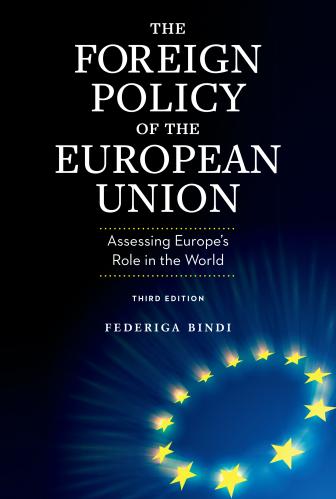
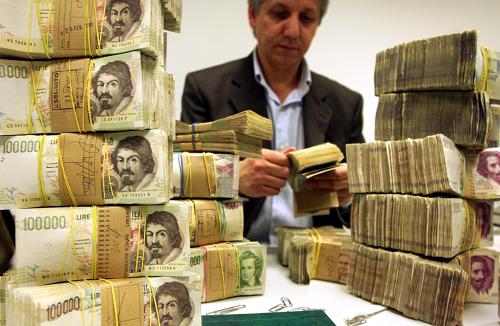
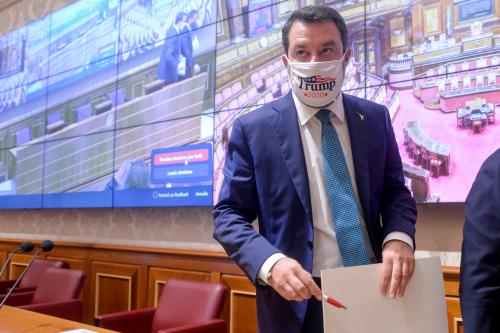
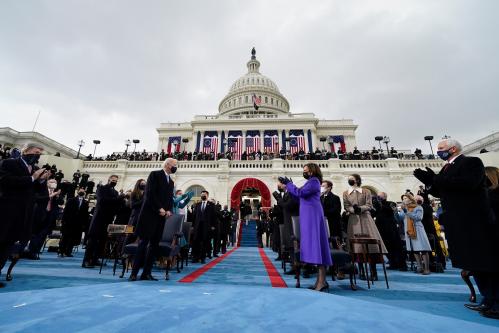

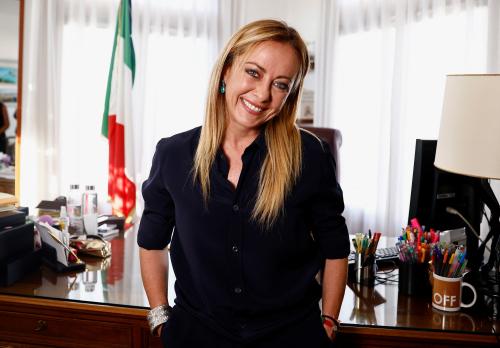
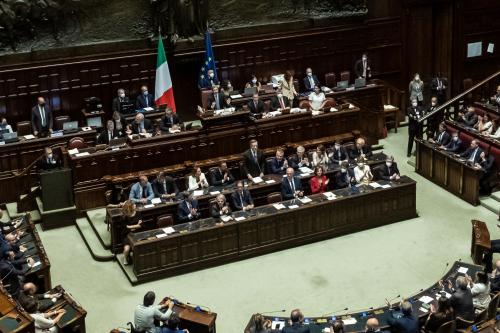
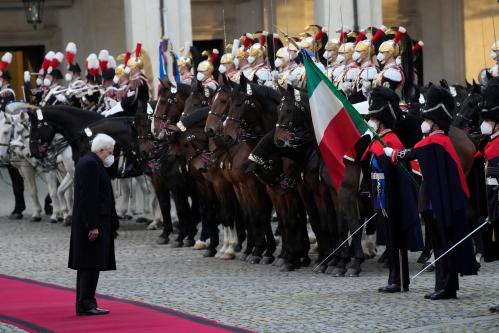
Commentary
What’s next for Italy’s government?
February 10, 2021